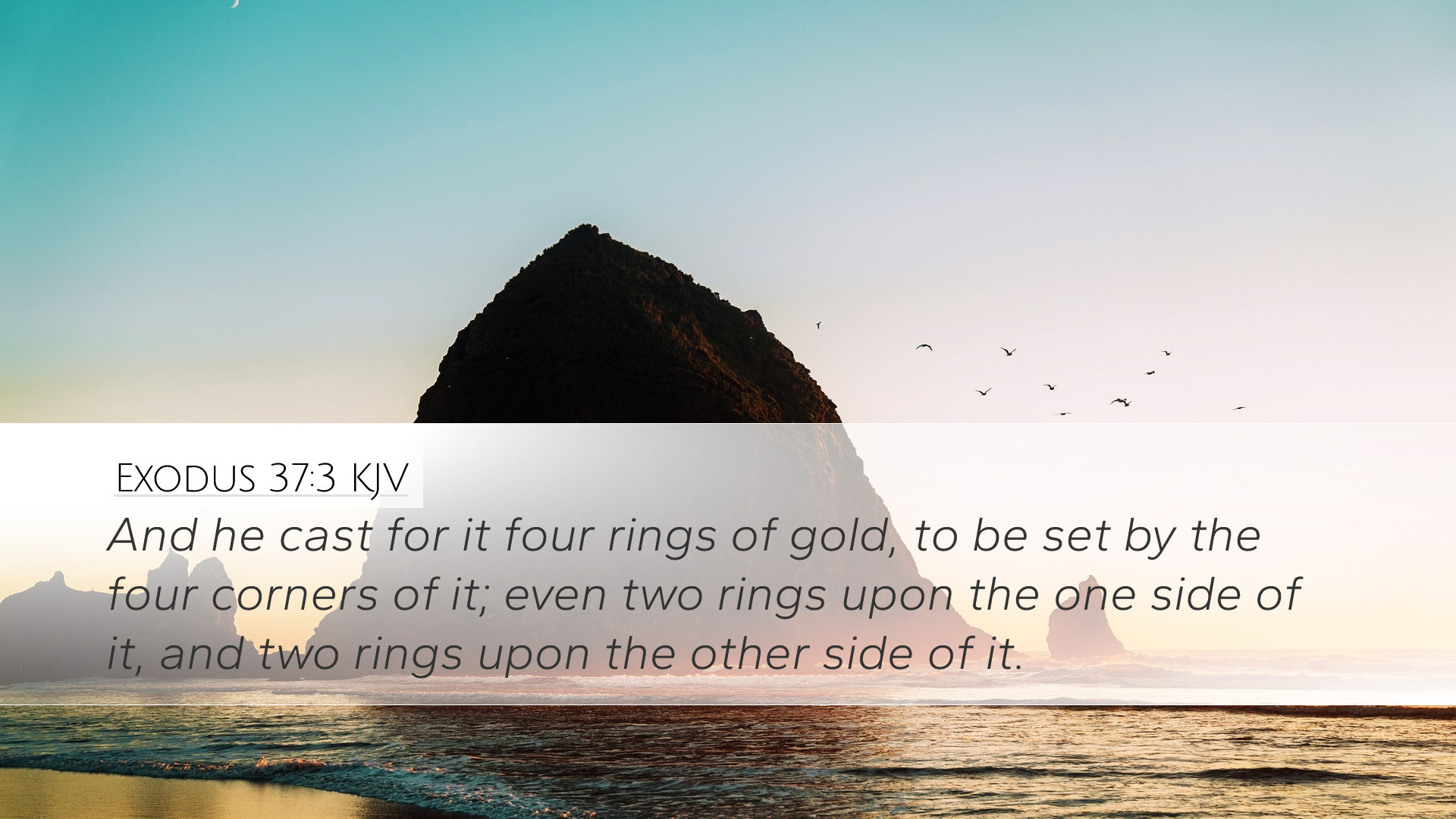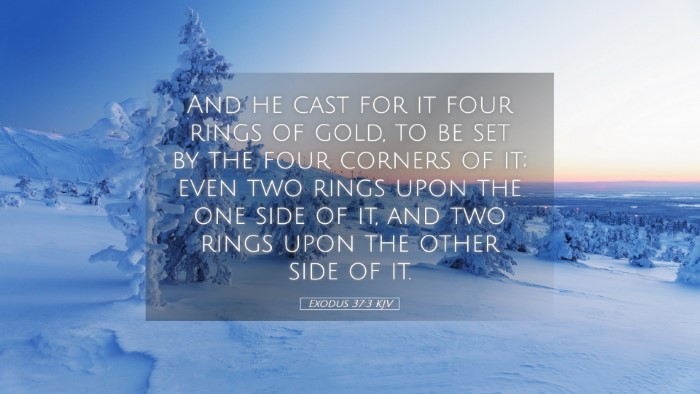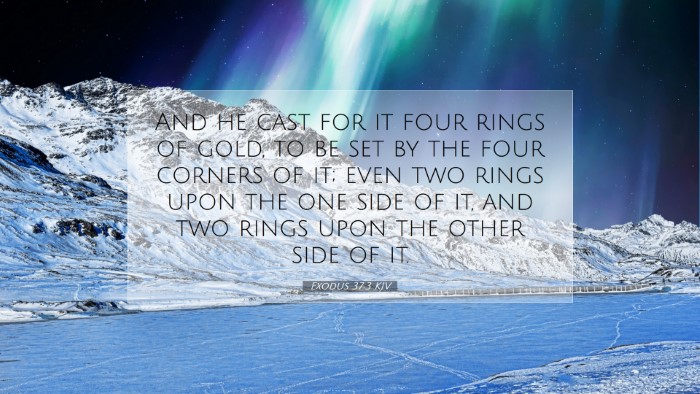Commentary on Exodus 37:3
Verse Reference: Exodus 37:3 - "And he cast for it four rings of gold to be set by the four corners thereof; even two rings upon the one side of it, and two rings upon the other side of it."
Introduction
This passage forms part of the detailed descriptions concerning the construction of the Tabernacle and its furnishings. The instructions given to Moses, particularly those concerning the Ark of the Covenant, signify the importance of divine presence and order in worship. In this verse, we see the craftsmanship and the careful attention to detail essential for establishing God’s dwelling among His people.
The Significance of the Ark
The Ark of the Covenant represents the very presence of God among His people. It was the place where God met Moses, and it contained the stone tablets of the Law (Exodus 25:22). The presence of the Ark was not only central to Israelite worship but also foundational in their identity as God’s chosen people. Matthew Henry notes that the Ark serves as a token of the covenant between God and Israel, highlighting the importance of divine guidance and law in their community.
Detailed Construction
The meticulous instructions given in Exodus reflect God's desire for His dwelling place to be both beautiful and functional. The craftsmanship described in the verses leading to 37:3 illustrates the high standards set for the construction of holy items.
- Four Rings: The casting of four rings of gold signifies stability and the universality of God's presence. The rings were placed at the four corners, allowing for mobility, which was essential for a people on the move.
- Movement and Accessibility: The Ark needed to be portable, evidencing a God that travels with His people. The rings, as noted by Albert Barnes, are symbolic of holy items being accessible yet respected.
Symbolic Meanings
Each part of the Ark and its design carries deep symbolic meaning. Adam Clarke emphasizes the theological implications of its construction:
- Gold Rings: Represents divinity and purity. Gold often symbolizes wealth and glory in Biblical texts, signifying the majesty of God.
- Corners: The four corners may signify the entirety of creation or the four directions, affirming God’s dominion over all the earth.
Theological Implications
Engaging with this passage requires an understanding of the significance ascribed to the Ark in the broader narrative of redemption. Matthew Henry notes that the Ark’s placement within the Holy of Holies represents the climactic meeting place between God and humanity. It emphasizes the priestly role and the mediatorship of the high priest, pointing forward to Christ as our ultimate mediator.
Lessons for Today
For pastors and theologians today, the careful design and structure of the Ark can encourage a deeper understanding of how God approaches His people. The meticulous attention to detail speaks volumes about God’s expectations of holiness and reverence. The following lessons can be drawn:
- Holiness in Design: Just as the Ark was designed with intention, we should strive for holiness and intentionality in our worship practices.
- Continuing Presence: The movement of the Ark indicates God's presence amongst His people. Today, believers are reminded of the indwelling of the Holy Spirit, who guides and comforts us.
- Respect for Sacred Spaces: The reverence shown to the Ark teaches us the importance of approaching God’s presence with awe and respect.
Conclusion
Exodus 37:3 encapsulates crucial truths about divine presence, holiness, and the relationship between God and His people. The construction of the Ark, with its gold rings symbolizing mobility and sacredness, serves as a reminder of the profound significance of worship. Pastors and students of theology are called to examine how these ancient practices inform and transform our contemporary understanding of faith, community, and the sacred.


